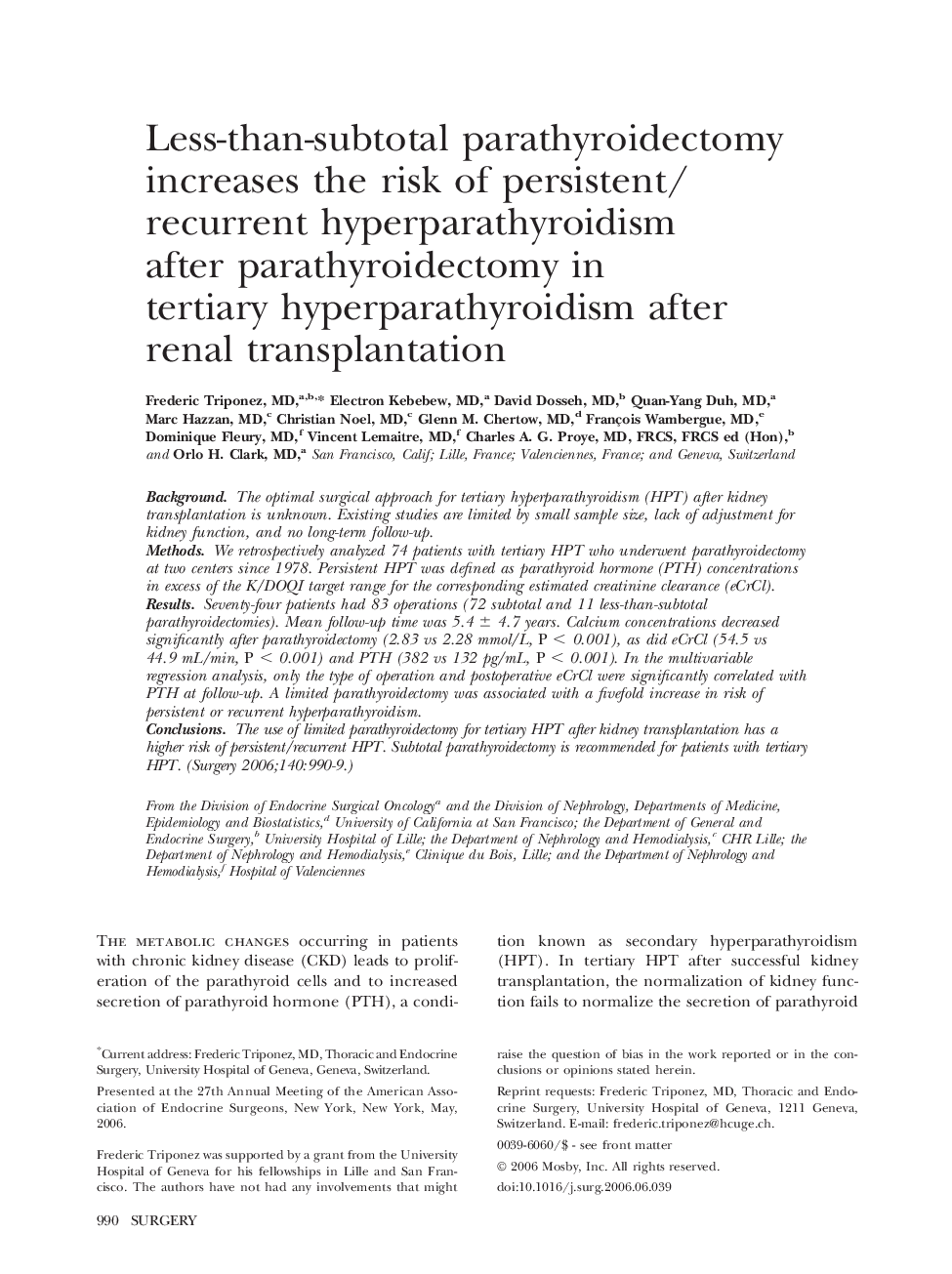| Article ID | Journal | Published Year | Pages | File Type |
|---|---|---|---|---|
| 4310465 | Surgery | 2006 | 10 Pages |
BackgroundThe optimal surgical approach for tertiary hyperparathyroidism (HPT) after kidney transplantation is unknown. Existing studies are limited by small sample size, lack of adjustment for kidney function, and no long-term follow-up.MethodsWe retrospectively analyzed 74 patients with tertiary HPT who underwent parathyroidectomy at two centers since 1978. Persistent HPT was defined as parathyroid hormone (PTH) concentrations in excess of the K/DOQI target range for the corresponding estimated creatinine clearance (eCrCl).ResultsSeventy-four patients had 83 operations (72 subtotal and 11 less-than-subtotal parathyroidectomies). Mean follow-up time was 5.4 ± 4.7 years. Calcium concentrations decreased significantly after parathyroidectomy (2.83 vs 2.28 mmol/L, P < 0.001), as did eCrCl (54.5 vs 44.9 mL/min, P < 0.001) and PTH (382 vs 132 pg/mL, P < 0.001). In the multivariable regression analysis, only the type of operation and postoperative eCrCl were significantly correlated with PTH at follow-up. A limited parathyroidectomy was associated with a fivefold increase in risk of persistent or recurrent hyperparathyroidism.ConclusionsThe use of limited parathyroidectomy for tertiary HPT after kidney transplantation has a higher risk of persistent/recurrent HPT. Subtotal parathyroidectomy is recommended for patients with tertiary HPT.
